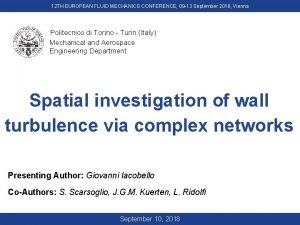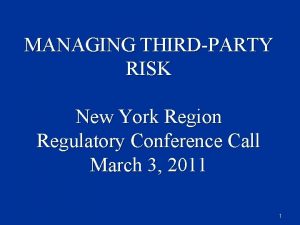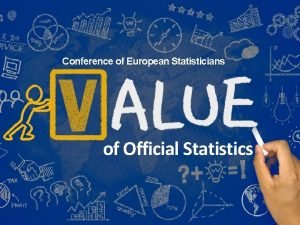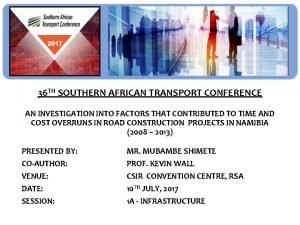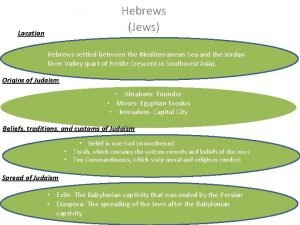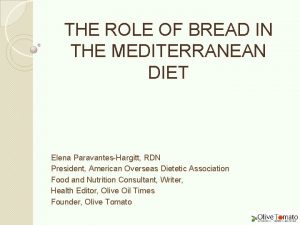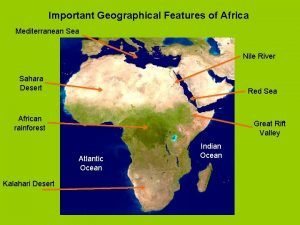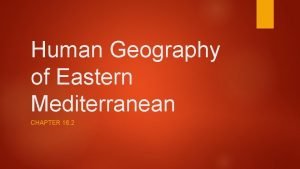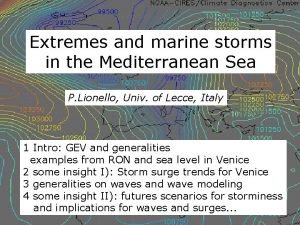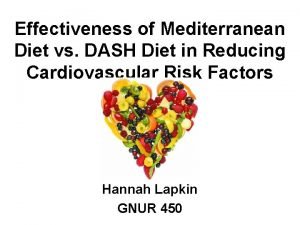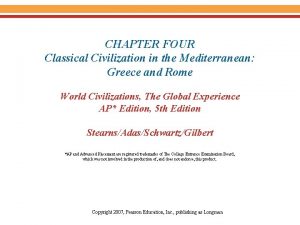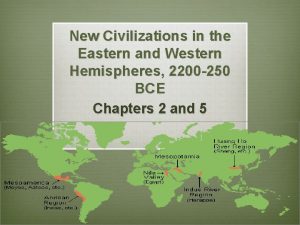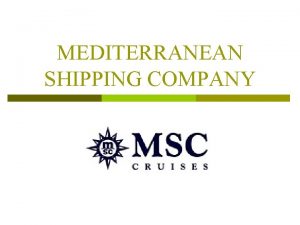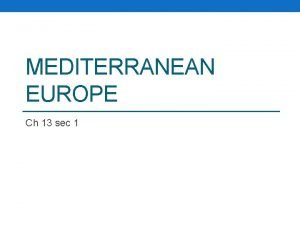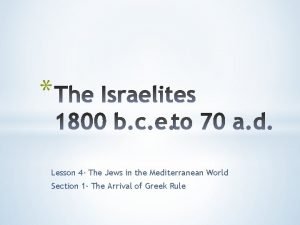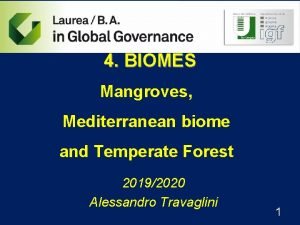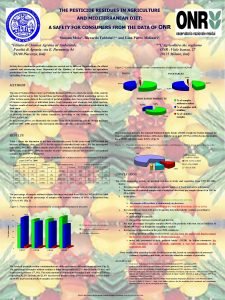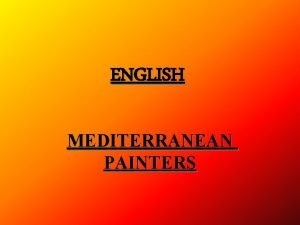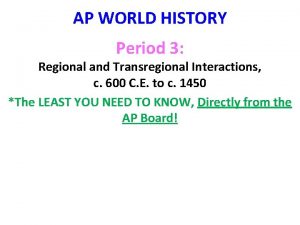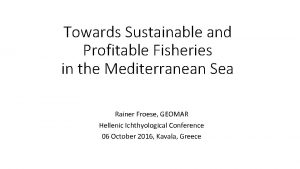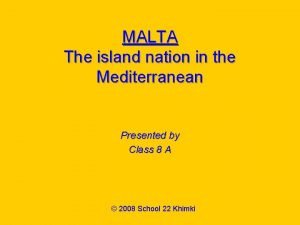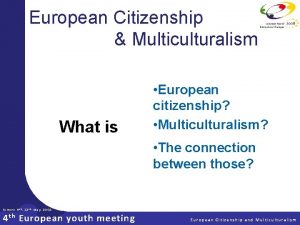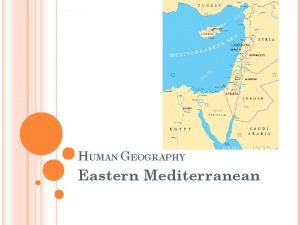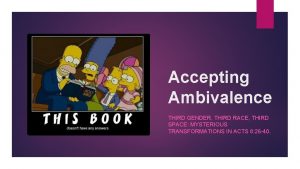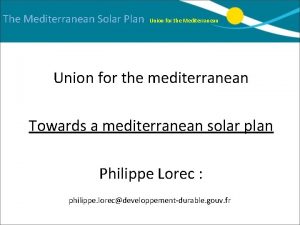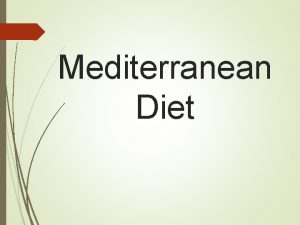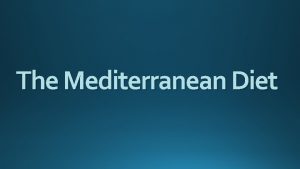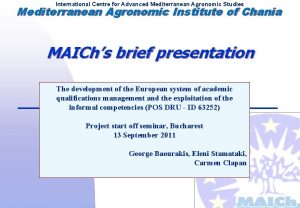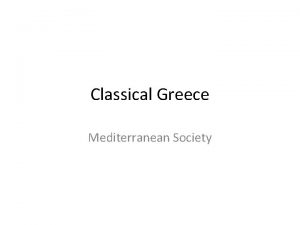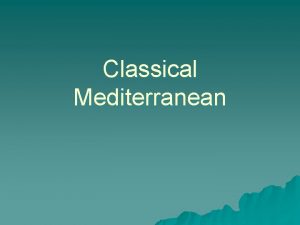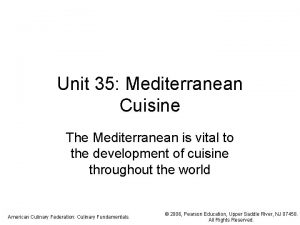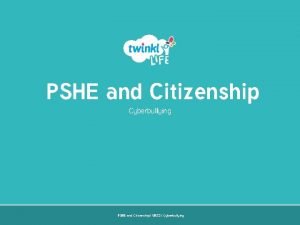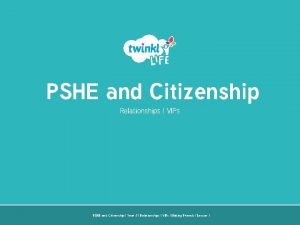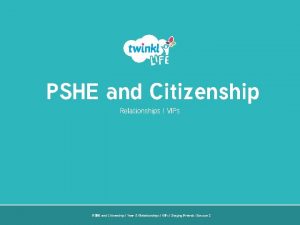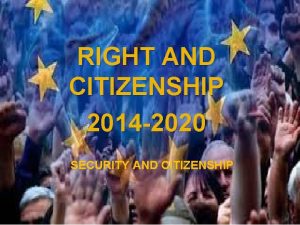Third South European and Mediterranean Conference On Citizenship
































- Slides: 32

Third South- European and Mediterranean Conference On Citizenship Identity and Culture: Inclusive Society under Crisis University of Western Macedonia Department of Early Childhood Education Pipini Εleftheriou, phd student Ifigenia Vambakidou, associate Professor (2011) Art crafts and different cultures in Greek Thrace: the case of Pomaks May 6, 7 and 8 th, 2011

Local area

Ηistorical research and the pictures In the historical research the pictures, as trace, as evidence and as depiction/narration constitute sources for the historians of the material culture in the process of reforming the everyday life of the people in terms of their cultural elements because they transfer quite clearly and briefly the significations of the historical period.

The research Ø This historical research consists of recording, analyzing and presenting the art crafts as historic evidence in cultural material that had been produced after 1930 in Greek Thrace. Ø To emphasize the importance of Wood Carving art in the culture and civilization of Greek Thrace from 1930 until today. Ø To record and classify the laboratories of the self-taught and non-self-taught artists/craftsmen (Christians, Muslims and others) in Greek Thrace, producing either in a family context or as individuals woodcuts for exhibition or other uses (for practical, decorative or religious purposes). Ø We focus on the case of Pomaks of the area and we try to find elements that confirm the inclusion of the art crafts in the place and in time, in order and in the local economy.

The research Ø In this specific presentation we analyze the visual material in order to reveal Pomaks’ productions and we focus on their selfdetermination. Ø We are interested in citizenship, as an ambiguous concept with changing and contested meanings vs to citizenship as a tactic of government through a discussion of Foucault’s governmentality thesis. Ø To reveal the local cultural beliefs and the significations of their local/Greek/Balkan/European citizenship.

The scientific fields involved in this research concern: Ø the history of Greek Thrace from 1930 to date, focusing on the multicultural social reality of the region as a geographical and historical place Ø the reinforcement of the Local History in modern Greek History Ø the Art History and especially the Greek Woodcarving art in a Balkan perspective

The research material In this historical research we used as sources/traces: Ø the words of the informants (interviews) Ø ddigitalized material (works of the artists/craftsmen) Ø the activities in the laboratory (on-site observation) Ø related published literature (direct and indirect material) § We have 33 interviews in total and 112 of them refer to their self determination as citizen of the country, of Europe. § We have 5 interviews of Pomaks in a total of 33 and twenty-five of them refer to their self determination as citizens of the country, of Europe.

Methodology social historic analysis We can analyse the visual data according to the material, the practical, the aesthetic purpose of the art-craft § 1 st reading: the localization of the work, the historical frame. Ø Who is its creator? Ø Where and when was it created? Ø What was the definite purpose of its creation? Ø What audience was it addressed to?

• Systematic collection and objective evaluation of data related to past occurrences in order to test hypotheses concerning causes, effects, or trends of these events that may help to explain present events and anticipate future events (Gay, 1996)

Methodology § 2 nd reading: the understanding of the role and the contribution to the historical knowledge and the historical culture. The verification of the external form, the kind of the source its central theme, the spotting of the attitude, the comparison with other sources constitute aspects of this interpretation. Ø What is the kind of evidence Ø Where was it found? Ø How was it preserved?

Methodology Ø Where was it kept? Ø What is theme? Ø What is shown, what is not mentioned, what is omitted? Ø Are there any other relevant evidences? If yes, do they express the same or other attitudes? Ø What is the relationship (subjective, partial, biased) among them? Ø What is the influence that it exercised at its time or in later years?

Methodology Interactive interviewing-Pomaks asked to verbally described their experiences of phenomenon § 3 rd reading: The inclusion of the work in the historical – social environment of the Pomaks as far as the formation and the revelation of the regional or state identity are concerned. Ø Do they claim their participation in exhibition as active citizens? Ø Do they demonstrate their work in their own region or in other regions? Ø How do they identify themselves in the interviews? Folk artisans, craftsmen? European? Thracian? Other?








Results Ø The wood from the mountainous area of the Pomak villages was used by the Pomaks as the basic element for the traditional architecture of the Pomaks’ residence and its equipment with useful items. Ø Pomaks construct worldly woodcuts that mainly cover the farming and the housekeeping activities (e. g. looms, plows, tables, stools, sofas, spoons, flasks, yoghurt bucket, plates, big spoons for the oven, e. t. c.

Results Comparing the worldly woodcut pieces of art that the Pomak artists/artisans created with the corresponding works of other groups we notify: Ø the technique of their works is plain Ø they are limited in manufacturing items of practical use for their housekeeping, farming and animal raising activities Ø the decoration with carved motifs is absent Ø decorative woodcut is not included in their work

Results Ø One of the Pomak woodcut craftsmen, apart from the several pieces of worldly art that he has made, was occupied professionally with the particular construction of the traditional Pomak house, too. Ø The loom is the common work of all the creators The loom was an important tool of the Pomak residence and occupation of the Pomak housewife, because the house crafting was one of the main occupations of the Pomaks. In the past the Pomak clothing was exclusively done by women with housemade materials.

Results From the total number of the woodcut craftsmen: Ø two have a separate room where they work artistically Ø two have been occupied professionally in their laboratories with carpentry, creating works for the region of the Pomak villages Ø one of the professionals taught the techniques of creation various wooden works to the trainees of the institute of Practical Education (IEK) for seven years.

Results Ø The participation of this group in exhibitions is limited to one whose work was mentioned in Passport magazine. Ø Some samples of this work are in the exhibitional hall of the Association of Xanthi's Pomaks which is hosted in the Institute of Thracean Art and Tradition.

Results Ø It seems that for Pomaks, citizenship is membership in a social-political community (originally a city or town but now usually a country) and carries with it rights to political participation; a person having such membership is a citizen. Ø In the case of Pomaks, a non-citizen is a non national and called either a foreigner or an alien. Citizenship derives from a legal relationship with a state. Citizenship can be lost, as in denaturalization, and gained, as in naturalization. Greek social policy with notions of work, obligation, community and social inclusion providing core concepts in the dynamic relationship between the state and individuals.

Results Ø Our study confirms the propositions of a number of researchers (Becker et al. ) on the utility of multiplying the targets of commitment to study behaviour at work, and especially the study of organizational citizenship. In conclusion: This research has two principal objectives: Ø the first is to emphasize the importance of Wood Carving art in the culture of Pomaks in Greek Thrace from 1930 until today Ø the second is to reveal the local cultural beliefs and the significations of their Greek, Balkan, European citizenship.

Results Ø Research reveals a positive impact of job satisfaction Ø Pomak as a folk, self taught craftsman belongs to the wider group of the folk craftsmen in Balkan and East and thus his citizenship refers also to them. Ø We find the importance of Wood Carving art in the culture of Greek Pomaks from 1930 until today, which also means the relationship with the local, environmental context.

Results Reading the art crafts and according to their oral statements, the local, cultural significations of their citizenship are revealing: Ø they are both producers and artists, who participate in the financial and Ø cultural production of the hard workers’ everyday life.




 European fluid mechanics conference
European fluid mechanics conference Gj mount classification
Gj mount classification Forward caries and backward caries
Forward caries and backward caries Third party risk management conference 2019 new york
Third party risk management conference 2019 new york 3 round table conference
3 round table conference Conference of european statisticians
Conference of european statisticians South african transport conference
South african transport conference South african transport conference
South african transport conference Old south vs new south streetcar named desire
Old south vs new south streetcar named desire The hebrews settled between the mediterranean sea and the
The hebrews settled between the mediterranean sea and the Unit 2 the united states and canada
Unit 2 the united states and canada Mediterranean diet bread
Mediterranean diet bread Make everyday mediterranean
Make everyday mediterranean Africa mediterranean
Africa mediterranean Chapter 16 eastern mediterranean answers
Chapter 16 eastern mediterranean answers Storms in the mediterranean sea
Storms in the mediterranean sea Dash diet vs mediterranean
Dash diet vs mediterranean Greek colonies in the mediterranean
Greek colonies in the mediterranean Ancel keys mediterranean diet
Ancel keys mediterranean diet Mediterranean civilizations location hemisphere
Mediterranean civilizations location hemisphere Gianlucci
Gianlucci Chapter 13 section 1 mediterranean europe
Chapter 13 section 1 mediterranean europe What was life like for the jews in greek-ruled lands?
What was life like for the jews in greek-ruled lands? Function of lenticels
Function of lenticels Mediterranean diet pesticides
Mediterranean diet pesticides Bioluminescence mediterranean sea
Bioluminescence mediterranean sea Veronica v picasso biografia
Veronica v picasso biografia Mediterranean sea map
Mediterranean sea map Danube river physical map
Danube river physical map General fisheries commission for the mediterranean
General fisheries commission for the mediterranean Mediterranean island nation
Mediterranean island nation Car gurtus
Car gurtus Low tide mediterranean
Low tide mediterranean
